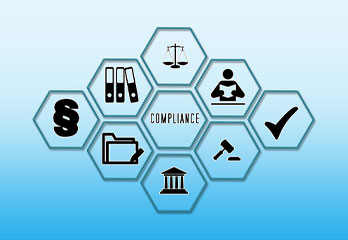As the hype about digital transformation continues, the words ‘digitization’ and ‘digitalization’ follow the conflict, improving the level of hype while continuing uncertainty. In certainty, these three terms have separate meanings – or at least, we can advance them differently depending on which power we’re eavesdropping to.
1. Digitization: The Outspoken Expression
Digitization points to practicing analog data and encoding it into zeros and ones so that processors can collect, process, and transfer such data. Digitization is the method of switching from analog to digital application. There are many instances of digitization in businesses today, as there have existed for many decades. Turning handwritten or printed text into digital form is an instance of digitization, as is changing the music from an LP or video off of a VHS line.
2. Digitalization, digitization, digital transformation: why does it imply?
Are you engrossed in digital transformation? If yes, then it’s great to understand the real implications of those terms and explain what we’re speaking about. Digitalization, digitization, and digital transformation are usually used concurrently. Sometimes even conversely, which is a misconception. This thing will make everything more transparent and help you learn digital transformation.
3. What is the contrast between digitization and digital transformation?
Digitalization is about using technology in the current business. Digital transformation involves making things in a modern, digital way. Digital transformation is a more general expression than digitalization. Digitization and digitalization are components of a digital transformation. Digital transformation encompasses all perspectives of business, like client agreement & touchpoints, growth artifice, performance mobile applications, process digitization, operator enablement, production, new business standards, and more. It points to a completely new market, as well as a new consumer and business sensibilities.
4. Digital transformation explained
Digital transformation signifies a comprehensive rethinking of how an industry uses technology, characters, and methods to fundamentally improve business execution. Digital transformation should be driven by the CEO of an organization, requires cross-departmental collaboration in joining business-focused opinions with accelerated application development standards. Such clearing changes are typically engaged in pursuance of new business rules and new wealth streams, inspired by changes in customer expectations throughout products and co-operation. Customer expectations are greatly surpassing what you can certainly do. That suggests a fundamental rethinking regarding what we do with technology in industries.
5. Digital transformation chauffeurs
Companies usually begin on digital transformations to counter the potential for confusion from authorities and startups. Estimate Uber’s hijacking of the transport division, driving everyone from taxi corporations to car rental firms to automakers to decide how to organize similar ride-sharing or other on-demand assistance, including bikes and motorcycles, into their marketing models.
Amazon.com’s constant march beyond nearly every local upright has heightened customer expectations for not only how fast they receive goods, but the uniform availability of assets. The so-called Amazon outcome has retailers applying algorithms to complement logistics and guarantee that anything from menu items to beauty aids immediately gets their way from regional warehouses — before their property places run out. Retail and customer goods require us to constantly reinvent ourselves to reach ever-changing consumer demands.
6. Digital transformation models
Apprehensive of being surrounded by more quick opponents, companies are trying to accelerate discovery, testing with new digital sets and abilities to expand breathing contributions or to slide into nearby markets.
Eatery chains are nervous of being delivered inappropriate by hipper, more tech-savvy boutique labels, are testing with implicit assistants to promote mobile ordering.
The grocery chain is running on anything from personalized product transactions and one-touch down for gas to AI software and robots that drive stock around its depots.
Startups play a significant role in many companies’ transformation policies. BMO Harris Bank stimulated the loan origination method with software from startup Compound to fit a favored digital destination for customers. Earlier, bankers consumed up to an hour planning the loan requests while customers waited.
7. How to start a digital transformation
To balance increasing customer expectations, many CIOs are participating with key executives, making large organizational perspectives, reskilling operators, hovering up change labs, and testing with emerging technologies to influence necessary commands issued by their CEOs and prerequisites.
One of the key things companies should do in lighting on a digital conversion is to provide the fundamental question: What business outcomes do you want to achieve for consumers? It starts with the industry events and the new company rules you’re running after and going slow from there.
Here, a powerful understanding of your customer review map and lifecycle is essential. Examine the process of choosing a compensation bill, which typically uses 7 to 14 trading days and requires a lot of paper shuffling. Attention to algorithms and mobile credentials, users, and applications managers can resolve requests in seconds. Allstate, for example, allows its customers to secure a description of their damaged motor transport via their smartphone and upload it for a claims leader to consider.
8. Digital transformation approaches
Creating trust — who is responsible for what — exposed is critically important upfront, but companies can support several other measures to improve the kind of change they desire. Hence:
9. Ruthlessly center on a distinct set of purposes.
Whether you’re remodeling an actual model or starting from scratch, administrators must reach an agreement on the most desirable path to continue.
10. Be clear when placing the scope.
Thriving digital alterations are 1.5 times more likely than others to be enterprise wide in order. This will also support CIOs to understand the biggest blow from their tech purchases. If they’re grounded on incremental quarters they may need the big movement they might have noticed.
11. Contain adaptive design.
The times of upfront purchase conditions and determined KPIs are over. Adaptive design allows CIOs to continue monthly or even weekly tweaks to the transformation policy, including reallocating expertise.
12. Adopt agile performance.
Promote risk-taking, allowing even lower-level workers to make judgments, fail fast, and study.
13. It’s okay to interrupt yourself.
Strong digital transformation needs preemptive differences rather than responding to competitive strengths or disruptors. But when should you make preemptive transformations? The investigation of living systems shows us that it is optimal for businesses to create searches well before they consume their popular origins of value and that firms should practice a mix of ‘big steps’ to proceed to unknown terrain and ‘small steps’ to reveal nearby advantages at low cost. Although, having a definite bias toward transformation is significant.
14. Fundamental digital transformation responsibilities
While developing tech and overhauled processes are essential, having the right experiences on staff is necessary for any digital transformation.
designers, cloud computing professionals, and product managers continue key positions for businesses soliciting to operate out new goods and services. DevOps managers electroplate the software community by joining development with services, allowing companies to continuously repeat software to further delivery.
Data specialists and data engineers are also in high command, as companies explore to gather perspicacity out of eternal troves of data, and alterations lean frequently on machine knowledge and artificial intelligence.







